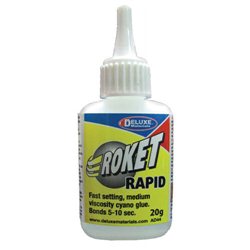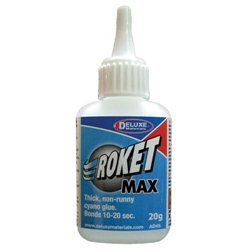There is no need to replace the bottle, it is more than likely a build-up of dry glue inside the nozzle. This is a...
No products
Product successfully added to your shopping cart
There are 0 items in your cart. There is 1 item in your cart.
Search Tips
Christmas and New Year
We are dispatching orders every weekday apart from Christmas Day, Boxing Day and New Year's Day.
If you order is time critical, select next day delivery at checkout.
The shop in Sandown is closed from 25th December, reopening on 30th December.
What are the differences between thin and thick Cyanoacrylate glues?
There are a number of different types of Cyanoacrylate or CA glue and each type has specific characteristics which help to determine where best to use them. CA Glues are readily identified by their respective viscosities. Regardless of manufacturer, most CA glues can be quantified as Thin (or Super Thin), Medium or thick.
Thin, or Super-thin CA glue has the lowest viscosity of the three options and so it is the most mobile. It is especially effective when used where the working space for part placement is very small. It is also effective at filling very tight gaps as it efficiently uses capillary action to pull itself into very small spaces. The big advantage here is that comparatively small amounts can be used to secure parts and when used with care there should be minimal excess residue to clean up. The main disadvantage of Thin CA Glue is that it has a frighteningly quick cure time. Inevitably this requires the modeller to have the required pieces aligned so that they are ready to take the glue, as Thin CA will not allow time for experimentation or precision placement.
Medium CA glue has some inherent viscosity but if carefully applied will not run excessively. It is quick to cure but will also offer a strong joint. Most modellers will generally use a medium version of CA glue as it can be used in small quantities, it generally stays where you put it and it will afford any glued parts a strong bond. Thin CA glue works best where it can utilise the surface to its advantage. Medium CA is more flexible allowing it to be used in more remote locations or on smaller exposed parts where a strong bond is desirable.
Thick CA glue has the greatest viscosity of all the CA glue variants. it is slow-moving and has the longest drying time of the three CA glue options. This allows it to be precisely positioned with ease via a toothpick or other similar item. It will generally stay where it is put and will allow some time for more precise alignment or positioning of parts. It is also a good option for securing larger items such as nuts or bolts that will not be required to move once placed. Additionally, it can be sanded once dried.
Click here to receive the tips weekly in your mailbox. You can unsubscribe at any time.










